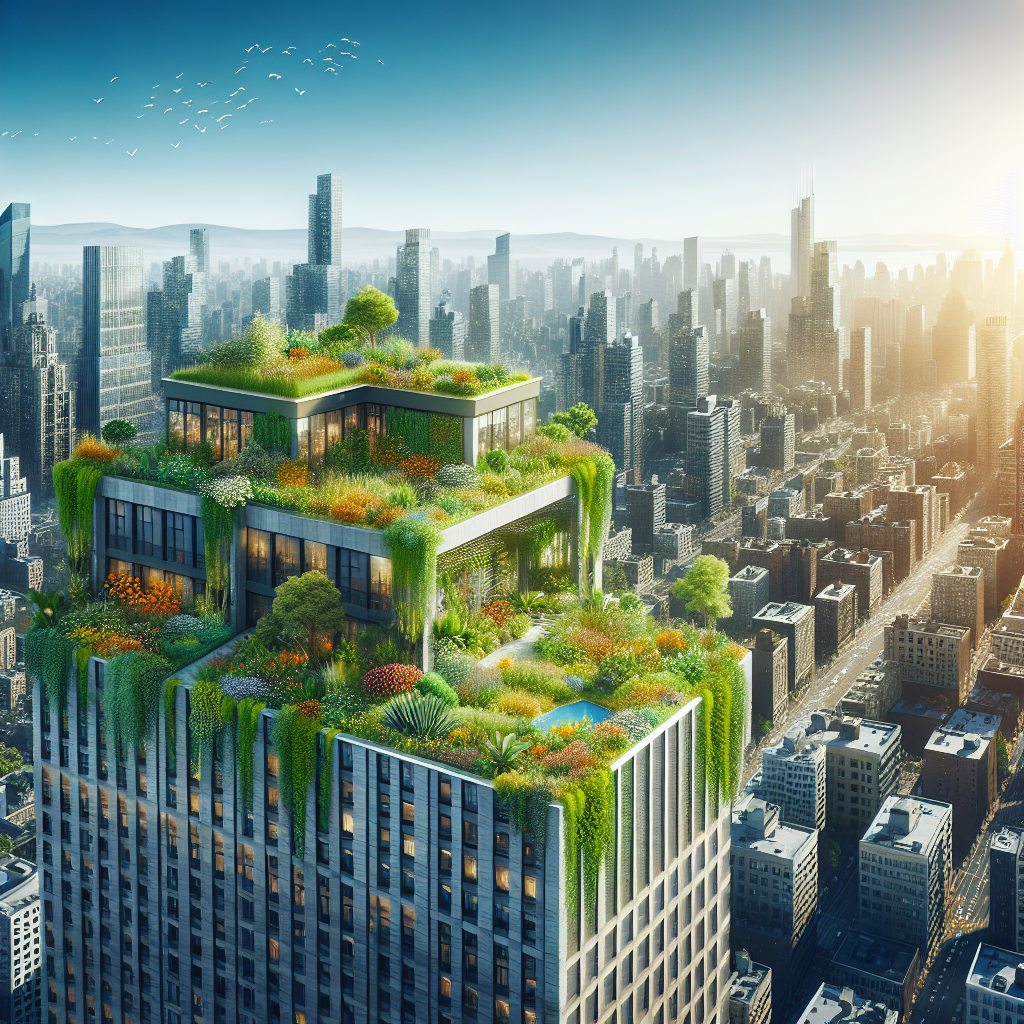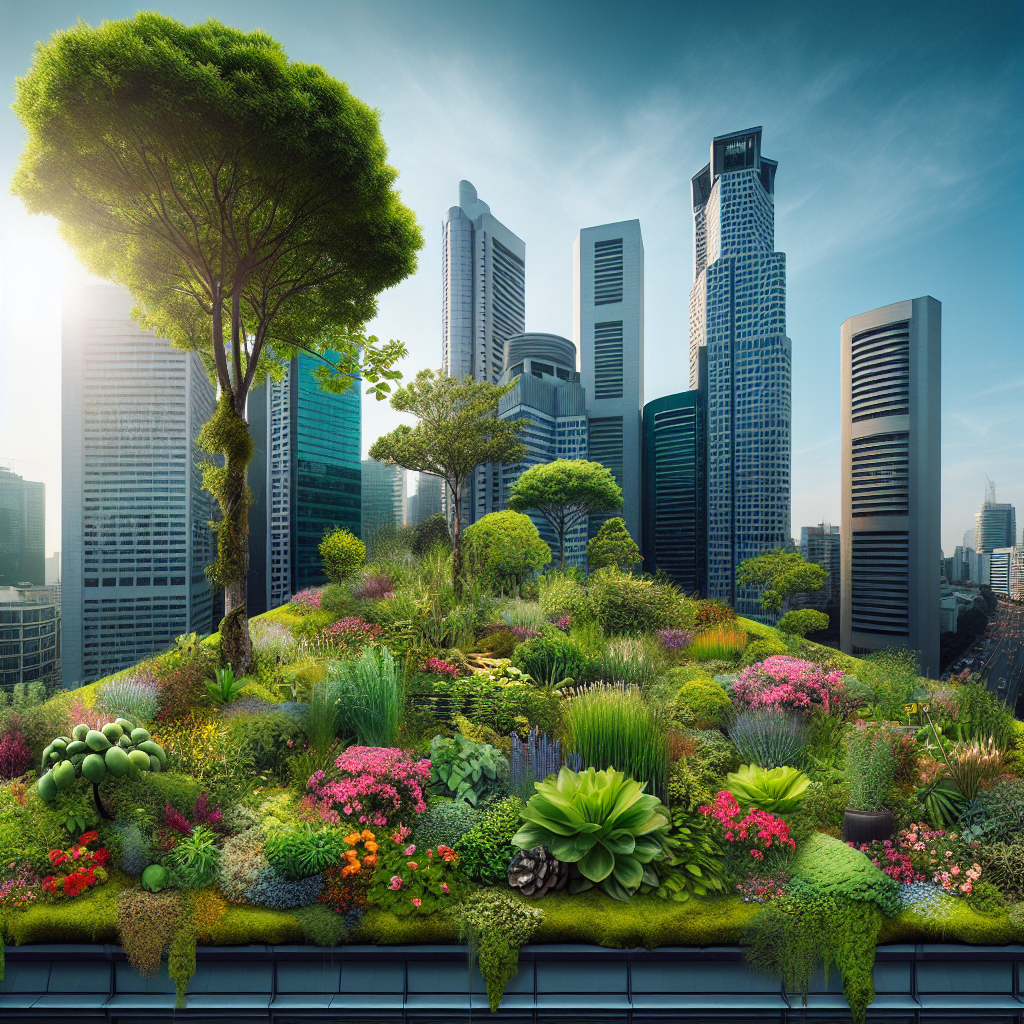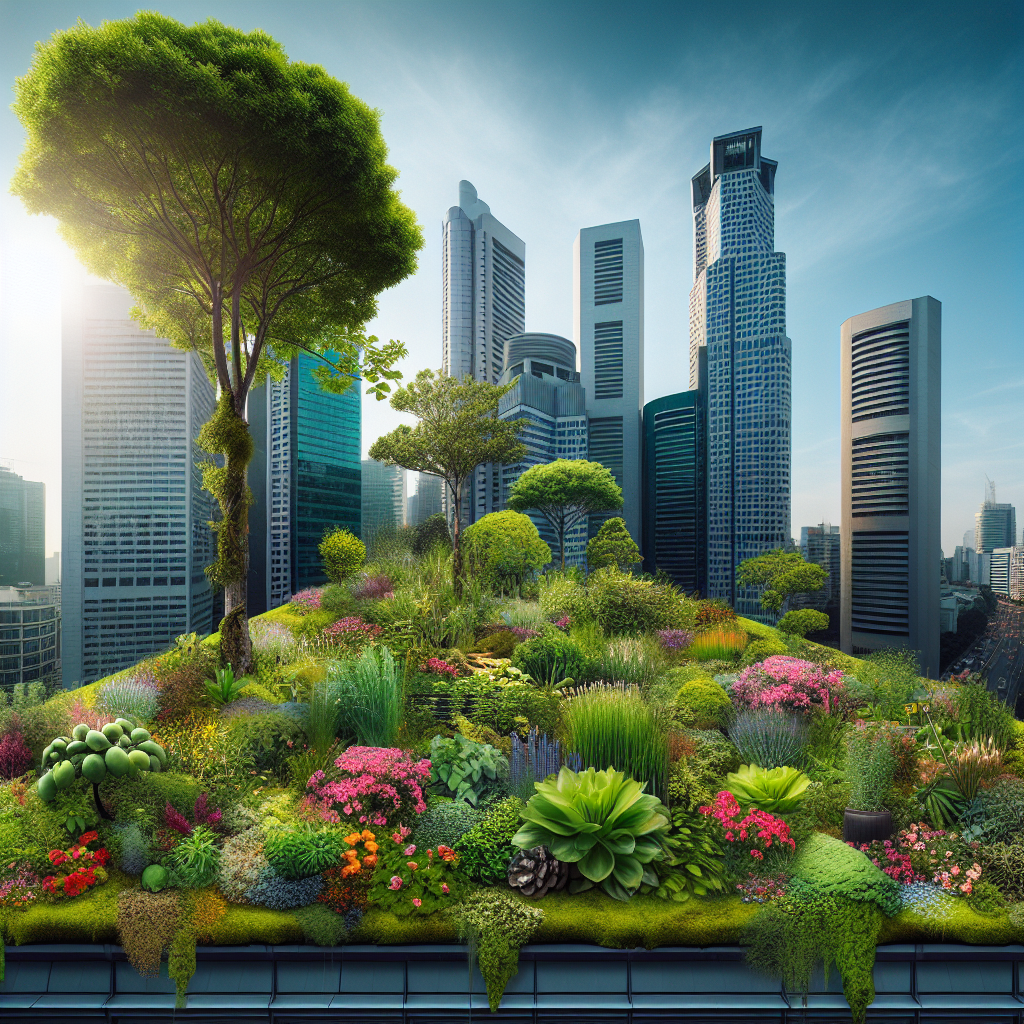Imagine living in a bustling city, surrounded by concrete and skyscrapers. Now picture a lush, green oasis amidst the concrete jungle, a haven of thriving plants and vibrant wildlife. This is the allure and power of green roofs in urban areas. Green roofs not only provide an aesthetically pleasing escape from the urban landscape, but they also offer a multitude of benefits to both the environment and its inhabitants. From improving air quality and reducing energy costs to creating peaceful retreats and promoting biodiversity, the advantages of green roofs are undeniable. In this article, we will explore the various benefits that green roofs bring to urban areas, highlighting the positive impact they have on both our cities and our lives.

Reducing Urban Heat Island Effect
Cooling Effect
Green roofs have a significant cooling effect on urban areas. The plants and soil on green roofs absorb and retain heat, reducing the temperature in surrounding buildings and areas. This helps to mitigate the heat island effect, where cities become much hotter than surrounding rural areas due to the high concentration of concrete and asphalt. By implementing green roofs, you can create a more comfortable environment, reducing the need for air conditioning and lowering energy consumption.
Reducing Energy Consumption
Green roofs also contribute to reducing energy consumption in urban areas. By providing natural insulation and shade, they help to regulate indoor temperatures, reducing the need for constant heating or cooling. This not only results in energy savings for individual buildings but also diminishes the overall energy demand on the grid. Investing in green roofs can, therefore, lead to a more sustainable and cost-effective solution for cooling and heating needs in urban areas.
Improving Air Quality
Green roofs play a crucial role in improving air quality in urban areas. The vegetation on green roofs acts as a natural air filter, removing pollutants and harmful gases from the surrounding environment. This helps to reduce the levels of air pollution, which can have detrimental effects on human health. By implementing green roofs, you can contribute to cleaner and healthier air for both residents and visitors in urban areas.
Managing Stormwater Runoff
Reducing Flooding
One of the significant benefits of green roofs is their ability to manage stormwater runoff effectively. In urban areas, the large amount of impervious surfaces, such as roads and buildings, results in increased stormwater runoff, which can lead to flooding and water pollution. Green roofs absorb rainwater, reducing the volume and velocity of runoff during heavy rainfall events. This helps to alleviate the strain on drainage systems and prevent flooding in urban areas.
Improving Water Quality
Green roofs also contribute to improving water quality in urban areas. As rainwater passes through the vegetation and soil layers of green roofs, it undergoes natural filtration, removing pollutants and contaminants. This filtered water then reenters urban water systems or groundwater, reducing the burden on wastewater treatment plants and contributing to a cleaner and healthier water supply.
Promoting Biodiversity and Habitats
Creating Urban Refuges
Green roofs provide valuable urban refuges for a variety of plant and animal species. In highly developed and densely populated urban areas, green spaces are often limited. By implementing green roofs, you can create additional habitats for birds, butterflies, insects, and even small mammals. These green oases offer opportunities for urban biodiversity, supporting the coexistence of different species in an otherwise concrete-dominated environment.
Supporting Native Species
Green roofs also play a crucial role in supporting native plant species. By using locally adapted vegetation, green roofs can help preserve local biodiversity and contribute to the overall ecological health of urban areas. Native plant species are better adapted to local climates, require less maintenance, and provide food and shelter for local wildlife. By choosing native plants for green roofs, you can help support and protect the natural heritage of your city.
Providing Bird Habitats
Bird habitats are often limited in urban areas due to the lack of green spaces. Green roofs offer an opportunity to create valuable nesting and foraging grounds for birds. By providing a combination of tall grasses, shrubs, and flowering plants, green roofs can attract a variety of bird species, adding vibrancy and biodiversity to urban environments. The presence of birds not only enhances the ecological value of green roofs but also contributes to a more enjoyable and engaging urban experience for residents and visitors alike.
Enhancing Aesthetics and Quality of Life
Visual Appeal
Green roofs add visual appeal to urban areas, breaking up the monotony of concrete and asphalt landscapes. The vibrant colors and textures of plants on green roofs create a visually pleasing and calming environment. Whether viewed from above or at street level, green roofs introduce a touch of nature to otherwise industrial or urban settings, enhancing the overall aesthetic quality of the cityscape.
Noise Reduction
Green roofs also provide a natural sound barrier, reducing noise levels in urban areas. The layers of vegetation and soil on green roofs absorb and reflect sound waves, effectively reducing the impact of noise pollution from traffic, construction, and other urban activities. This can significantly improve the quality of life for residents in urban areas, creating a quieter and more peaceful living environment.
Increased Property Value
Implementing green roofs can also contribute to increased property values in urban areas. The aesthetic appeal, improved air quality, and other benefits of green roofs make properties more attractive to potential buyers or tenants. Studies have shown that properties with green roofs often command higher prices and have quicker turnover rates. By investing in green roofs, property owners can enhance the value of their buildings while enjoying the numerous benefits that come with them.

Improving Energy Efficiency
Reducing Heat Transfer
Green roofs help to improve energy efficiency in buildings by reducing heat transfer. The layers of plants and soil on green roofs act as natural insulation, effectively preventing heat from being conducted into buildings during hot weather. This reduces the need for air conditioning, ultimately leading to energy savings and lower utility bills. By implementing green roofs, you can create a more thermally efficient building envelope, reducing energy consumption and promoting sustainability.
Insulating Buildings
In addition to reducing heat transfer, green roofs also provide insulation for buildings during colder months. The layers of vegetation and soil on green roofs create an extra thermal barrier, preventing heat loss and reducing the need for excessive heating. This helps to maintain a comfortable indoor temperature while reducing energy demand and associated greenhouse gas emissions. Green roofs, therefore, offer a year-round solution for improving energy efficiency and reducing carbon footprints in urban areas.
Increasing Rooftop Usability
Recreational Spaces
Green roofs can provide additional recreational spaces in urban areas. By transforming rooftops into gardens or parks, you can create valuable outdoor areas for residents and visitors to enjoy. These green spaces offer opportunities for relaxation, social gatherings, and recreational activities. Whether it’s a rooftop garden, a playground, or a walking trail, green roofs provide urban dwellers with accessible and enjoyable spaces to enhance their quality of life.
Urban Agriculture
Green roofs also have the potential to support urban agriculture. With the increasing interest in local food production and sustainability, many cities are embracing the concept of rooftop farming. Green roofs provide the ideal space for growing vegetables, herbs, and even small fruits. Urban agriculture not only contributes to food security but also promotes community engagement and educates people about sustainable agriculture practices. By utilizing green roofs for urban agriculture, you can maximize the potential of rooftops and make cities more self-sufficient in their food production.
Extending Roof Lifespan
Protection from Ultraviolet (UV) Rays
Green roofs provide an extra layer of protection for rooftops, extending their lifespan. The vegetation and soil on green roofs act as a shield, blocking harmful ultraviolet (UV) rays that can damage roofing materials over time. The sun’s UV rays accelerate the deterioration of roofs, leading to cracking, fading, and leakage. By installing green roofs, you can significantly reduce UV exposure and prolong the life of your roof, saving money on costly repairs or replacements.
Reducing Thermal Stress
Green roofs also help to reduce thermal stress on roofing materials. The plants and soil on green roofs absorb and dissipate heat, preventing excessive expansion and contraction of roofing materials due to temperature fluctuations. This helps to minimize the risk of cracks and other forms of damage caused by thermal stress. By incorporating green roofs, you can protect your roof from premature aging and ensure its longevity in the face of changing weather conditions.
Reducing Air Pollution
Absorbing Pollutants
Green roofs have the ability to absorb pollutants from the air, contributing to a cleaner urban environment. The vegetation on green roofs can capture heavy metals, volatile organic compounds (VOCs), and other harmful pollutants, preventing them from entering the atmosphere. By acting as natural air filters, green roofs help to mitigate air pollution and improve the overall air quality. This has positive implications for human health and the well-being of urban communities.
Filtering Particulate Matter
Green roofs are effective in filtering out particulate matter from the air. Particulate matter, including dust, soot, and other fine particles, can have detrimental effects on respiratory health. The plant structures on green roofs act as physical barriers, capturing and trapping these particles, preventing them from being inhaled or settling on the ground. By implementing green roofs, you can contribute to cleaner and healthier air, reducing the risks associated with particulate matter exposure in urban areas.
Improving Noise Control
Sound Absorption
Green roofs offer excellent sound absorption properties, helping to control noise levels in urban areas. The layers of vegetation and soil act as sound barriers, absorbing and dampening sound waves generated by traffic, construction, and other sources of urban noise. This contributes to a quieter and more peaceful urban environment, improving the quality of life for residents and reducing the negative impact of noise pollution on health and well-being.
Sound Insulation
In addition to sound absorption, green roofs provide effective sound insulation for buildings. The layers of vegetation and soil act as barriers, reducing the transmission of sound into interior spaces. This helps to create a more comfortable and conducive environment for work, rest, and relaxation. By incorporating green roofs, you can minimize the intrusion of external noise and enhance the acoustic comfort of buildings in urban areas.
Stimulating Economic Benefits
Job Creation
Implementing green roofs in urban areas can stimulate job creation and economic growth. The design, installation, and maintenance of green roofs require specialized knowledge and skills, leading to job opportunities in the green roofing industry. From roofers to horticulturists, green roof projects create employment for a range of professionals. This not only supports local economies but also contributes to the overall well-being and social development of urban communities.
Ecotourism
Green roofs can also stimulate ecotourism in urban areas. The presence of green spaces and wildlife habitats on rooftops can attract tourists and visitors interested in exploring sustainable and environmentally friendly initiatives. Rooftop gardens, urban farms, and bird-watching opportunities can all serve as unique attractions for ecotourism. By leveraging the potential of green roofs, cities can tap into the growing market of eco-conscious travelers and generate additional revenue while promoting sustainable development.

